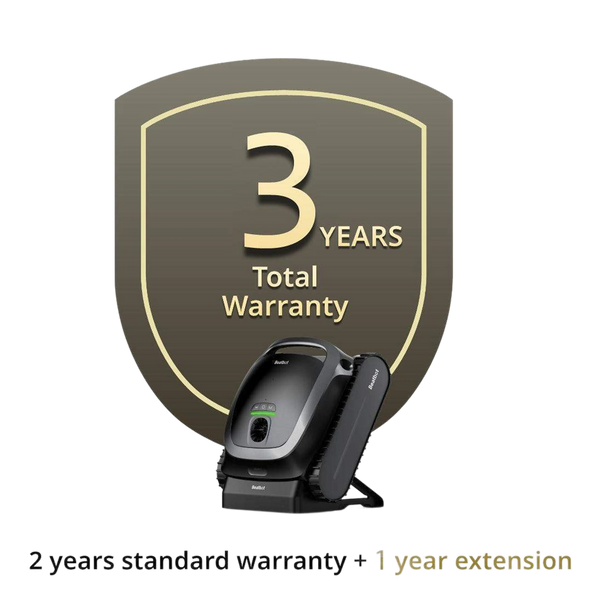Low Cost & Great Effect: A Guide to Pool Care
Welcome to the definitive guide for pool owners, whether you're a novice or a seasoned expert. Keeping your swimming pool in pristine condition is a vital endeavor that demands meticulous attention and consistent effort. Effective pool maintenance encompasses three key aspects: preserving water quality, ensuring the smooth operation of pool equipment, and safeguarding the pool's structural integrity. Each of these facets is indispensable in maintaining a safe, clean, and inviting swimming environment.
Table of content

The Art of Maintaining Water Quality
Water quality stands as the cornerstone of pool maintenance, directly impacting the health and well-being of swimmers. This involves frequent testing and careful adjustment of essential chemicals like chlorine, pH levels, and alkalinity.
Chlorine Levels:
Regularly test and tweak chlorine levels to maintain hygiene standards. Chlorine effectively eliminates harmful bacteria and algae, thereby guaranteeing safe swimming water.
pH Balance:
Maintain the pH level within the optimal range of 7.2 to 7.8. This sweet spot maximizes the efficacy of sanitizers like chlorine and shields swimmers' skin and eyes from irritation.
Alkalinity and Calcium Hardness:
Keep a close watch on these levels to forestall scaling and corrosion of pool equipment.
Pool Chemical Safety Precautions
Handling pool chemicals requires diligence and strict adherence to safety guidelines to ensure the well-being of your family, pets, and environment. Below are essential safety precautions to follow:
Safe Storage and Handling
- Keep Out of Reach : Always store pool products where they are inaccessible to children and animals.
- Protect Yourself : Wear rubber gloves and protective goggles when handling chemicals. If they come into contact with your skin, rinse immediately with cold water for a minimum of 15 minutes, then seek medical advice.
- Manufacturer's Instructions : Store chemicals according to guidelines provided by the manufacturer to avoid accidents.
Precautionary Measures
- Spill Management : Never attempt to return spilled materials to their original containers or dispose of them with household waste.
- Proper Measurement : Utilize clean, dry equipment for measuring chemicals, and rinse thoroughly after use.
- No Mixing : Different chemical types, whether for a spa, pool, or general household cleaning, should never be mixed.
Usage Instructions
- Add Carefully : Always add chemicals to water, not the other way around, to prevent contamination.
- Prevent Moisture : Ensure dry chlorine remains dry; exposure to moisture or dampness can lead to unsafe chemical reactions.
- Avoid Flames : Keep all open flames and sources of ignition at a safe distance from pool chemicals.
Disposal and Replacement
- Container Reuse : Do not reuse empty chemical containers. Instead, follow local regulations for disposing of them properly.
- Disposing Unused Chemicals : Dispose of leftover chemicals at the end of the pool season in accordance with hazardous waste regulations, and purchase fresh supplies when reopening your pool.
By implementing these precautions, you can maintain a safe swimming environment and effectively manage your pool chemicals with confidence.
Ensuring Optimal Equipment Performance
The seamless operation of pool equipment, including pumps, filters, and heaters, is essential for maintaining pristine water quality.
Pump and Filter:
Routinely inspect and clean the pump and filter to ensure peak performance. Clogged filters can hinder water circulation, leading to debris and bacteria accumulation.
Heater:
Ensure the pool heater functions flawlessly, particularly during colder seasons. A well-maintained heater keeps the pool water at a pleasant temperature.
Plumbing and Other Equipment:
Keep a vigilant eye out for any visible leaks or damage and address them promptly to thwart further issues.
Routine Pool Structure Evaluations
Regular inspections of the pool structure are vital for detecting and addressing any cracks, damage, or wear and tear that could compromise the pool's stability.
Shell and Tiles:
Examine the pool's shell and tiles for cracks, chips, or wear. Make timely repairs to halt further degradation.
Coping and Decking:
Inspect the coping and adjacent decking for damage, ensuring a secure perimeter around the pool.

Common Pool Maintenance Challenges
Algae Growth:
Warm and damp conditions create a perfect breeding ground for algae. Regular cleaning and chemical treatments are paramount to thwart algae infestation. Often, algae growth is linked to a lack of sanitizer or algaecide, coupled with a pH imbalance. Start by balancing your water's pH, then apply an algae treatment. Clean your pool surfaces to combat new growth effectively. To prevent a recurrence, use algaecide on a weekly basis.
Debris Accumulation:
Leaves, dirt, and insects can pile up in the pool, especially during rainy spells. Daily skimming with a pool skimmer and thorough cleaning is essential to prevent filtration system clogging. This debris can also affect water clarity, contributing to cloudy water if not managed properly.
Chemical Imbalances:
Fluctuating weather and frequent pool use can disrupt chemical balances. Rigorous monitoring and adjustment of chemical levels are crucial for maintaining water quality. Cloudy water, for example, can often be remedied by shock treatment or the use of a water clarifier.
Furthermore, foam on the pool surface might indicate a chemical imbalance. Test and balance your chemical levels, and if foaming persists, try shocking your pool with chlorine. Insufficient calcium levels can also cause foam, so consider adding calcium chloride if needed. If an air leak is suspected, inspect your water levels and plumbing fittings, and seek professional help if necessary.
By staying vigilant and addressing these common pool problems promptly, you can maintain a clean and inviting swimming environment.
Essential Tools and Materials for Pool Maintenance
Maintaining a clean and healthy pool requires a combination of the right tools and materials. Here’s a comprehensive list of what you need to keep your pool in top shape:
Essential Tools
- Pool Vacuum: To efficiently remove debris and dirt from the bottom and sides of the pool.
- Pool Net: Useful for skimming leaves and larger debris off the pool surface.
- Pool Skimmer: Helps in removing smaller particles before they sink.
- Pool Brush: Essential for scrubbing the pool walls and floor to prevent algae buildup.
- Safety Gear: Gloves and eye protection to ensure your safety while handling chemicals.
- Water Test Kit: Vital for checking the chemical balance of your pool water regularly.
Necessary Materials
- Algaecide: Used to kill and prevent algae growth, keeping your pool water clear.
- pH Adjusters: Products to increase or decrease the pH levels, ensuring the water is balanced and safe.
- Pool Sanitizer: Options include chlorine, salt, or bromine to disinfect and purify the water.
- Pool Shock: A powerful treatment used weekly or after heavy usage to eliminate contaminants.
- Water Clarifier: Helps in binding small particles together so they can be readily filtered out.
Availability and pricing for these items can vary depending on location and the specific supplier you choose.
By ensuring you have these tools and materials on hand, you can effectively maintain your pool, guaranteeing a refreshing swimming experience for everyone.
Weekly Pool Maintenance Tips
Water Testing and Chemical Adjustment
Test and tweak chlorine, pH, alkalinity, calcium hardness, and stabilizer levels as required. Utilize test strips or a digital tester for precise measurements.
Step 1: Check the Pool's Water Balance
pH Levels : Using a test kit, dip a test strip into the pool water and compare it to the provided chart. The pH reading indicates how acidic the water is. Aim for a pH between 7.2 and 7.6 to prevent cloudy water and eye irritation. Adjust using a pH increaser or decreaser as needed.
Alkalinity and Calcium Hardness : While checking pH, also assess alkalinity and calcium hardness. These factors ensure water stability and prevent damage to pool surfaces.
Caution : Always handle pool chemicals with care. Follow usage instructions strictly, using protective gear when necessary, and adhere to storage guidelines.
Step 2: Check the Pool's Sanitizer Levels
- Sanitizer Types : Determine the type of sanitizer in use—chlorine, salt, or bromine. For chlorine, levels should be maintained between 1 and 4 parts per million. It's normal for the sun to reduce chlorine levels over time, so don't be alarmed by slight fluctuations.
Tip : Some test kits are compatible with mobile apps to store your results and offer recommendations. Always ensure the pool pump is running when adding chemicals for optimal distribution.
By following these steps, you can maintain a balanced and safe swimming environment, ensuring both water clarity and swimmer comfort.
Skimming and Pool Cleaning
Use a pool skimmer daily to scoop floating debris from the pool surface. Regularly empty the skimmer basket to maintain water flow. Brush the pool walls and floor weekly to prevent algae buildup.
Pool Equipment Inspection
Examine the pump, filter, and heater for proper operation and signs of wear or damage. Keep an eye out for leaks in the pool's plumbing and equipment.
Backwashing the Filter
Backwash the filter when the pressure gauge indicates a surge of 8-10 psi above the normal range. Regular backwashing enhances water circulation and prolongs the filter's lifespan.
Pool Vacuuming
Regularly vacuum the pool floor to eliminate settled debris. Opt for either a manual or automatic pool vacuum based on your preference.
Monthly Pool Maintenance Tips
Deep Cleaning
Scrub the pool tiles and grout with a pool-friendly cleaner to eliminate buildup and stains. Tackle stubborn stains with specialized cleaners or seek professional assistance.
Pool Structure Inspection
Conduct a thorough inspection of the pool shell, tiles, and coping. Address any necessary repairs to prevent further deterioration.
Equipment Servicing
Disassemble and clean the pump and filter components. Lubricate O-rings and seals to forestall wear and leaks. Clean or replace any clogged or damaged parts in the pool heater.
Water Level Monitoring
Maintain the correct water level at the skimmer's midpoint. Regularly check the water level and adjust it as necessary.
Chemical Upkeep
Perform shock treatment to eliminate bacteria and algae, especially after heavy use or rainfall. Adjust stabilizers and other chemical levels to maintain the ideal balance.
Preventive Measures
Taking preventive steps can drastically reduce maintenance requirements and extend your pool's lifespan.Regular Cleaning: Daily skimming, weekly brushing, and monthly deep cleaning keep the pool pristine and debris-free.
Proper Chemical Management:
Regular chemical balancing prevents algae growth and maintains water quality.
Equipment Servicing:
Routine inspections and maintenance of pool equipment prevent breakdowns and prolong their lifespan.
Water Level Regulation:
Maintaining the correct water level alleviates strain on the pool's filtration system and keeps the pool in optimal condition.By adhering to these comprehensive guidelines for swimming pool cleaning and maintenance, you can ensure your pool remains a safe, pristine, and delightful haven for swimmers. Consistent upkeep and preventive measures will help you sidestep common issues and keep your pool in tip-top shape for many years to come.
Relative Blogs
About the author


























